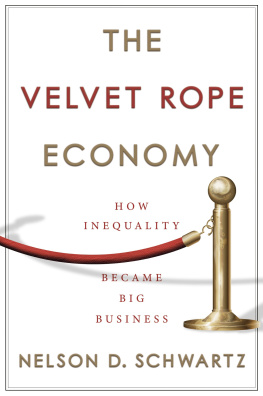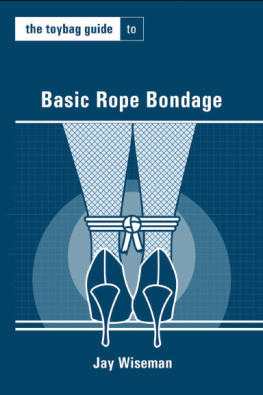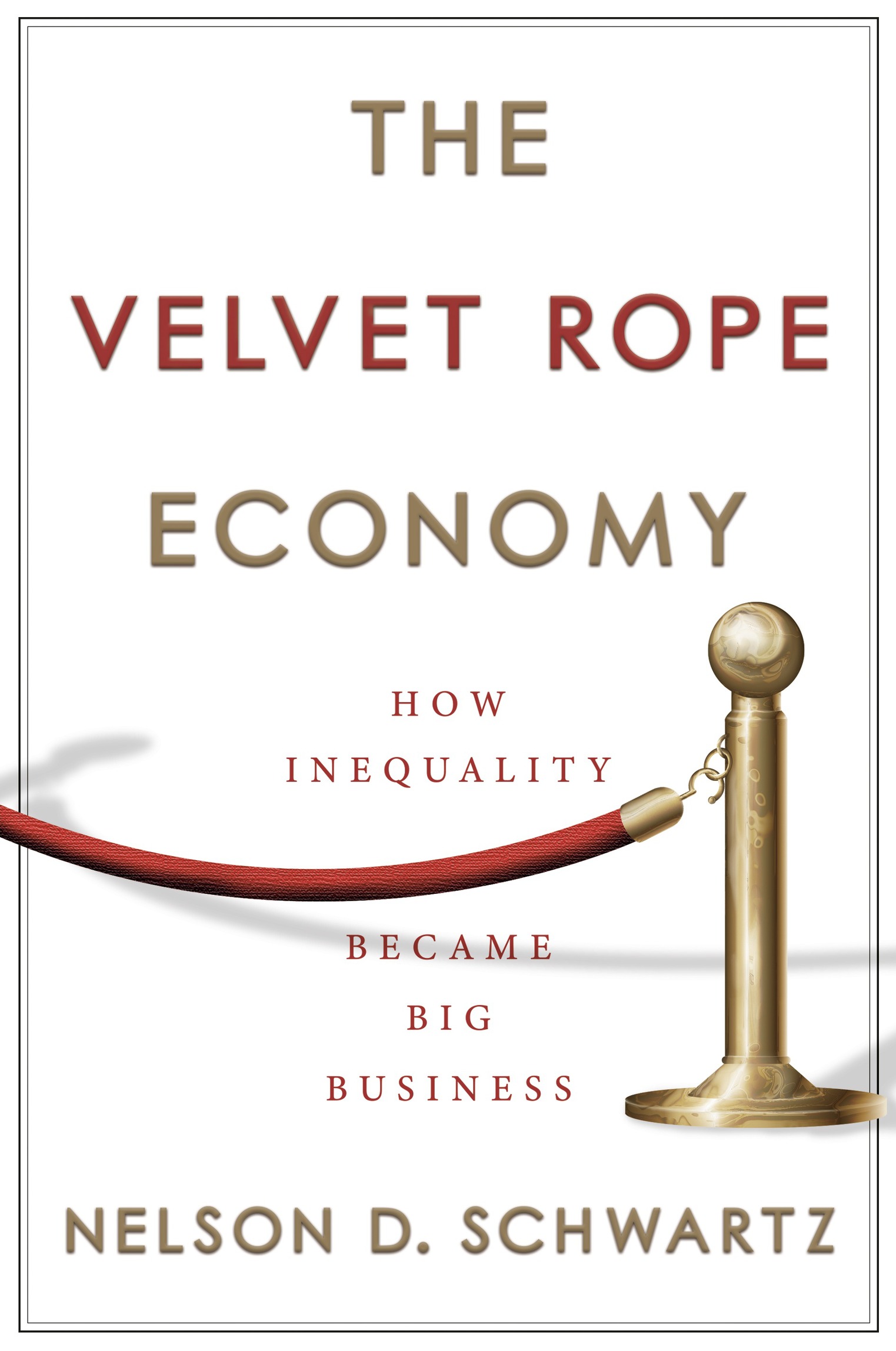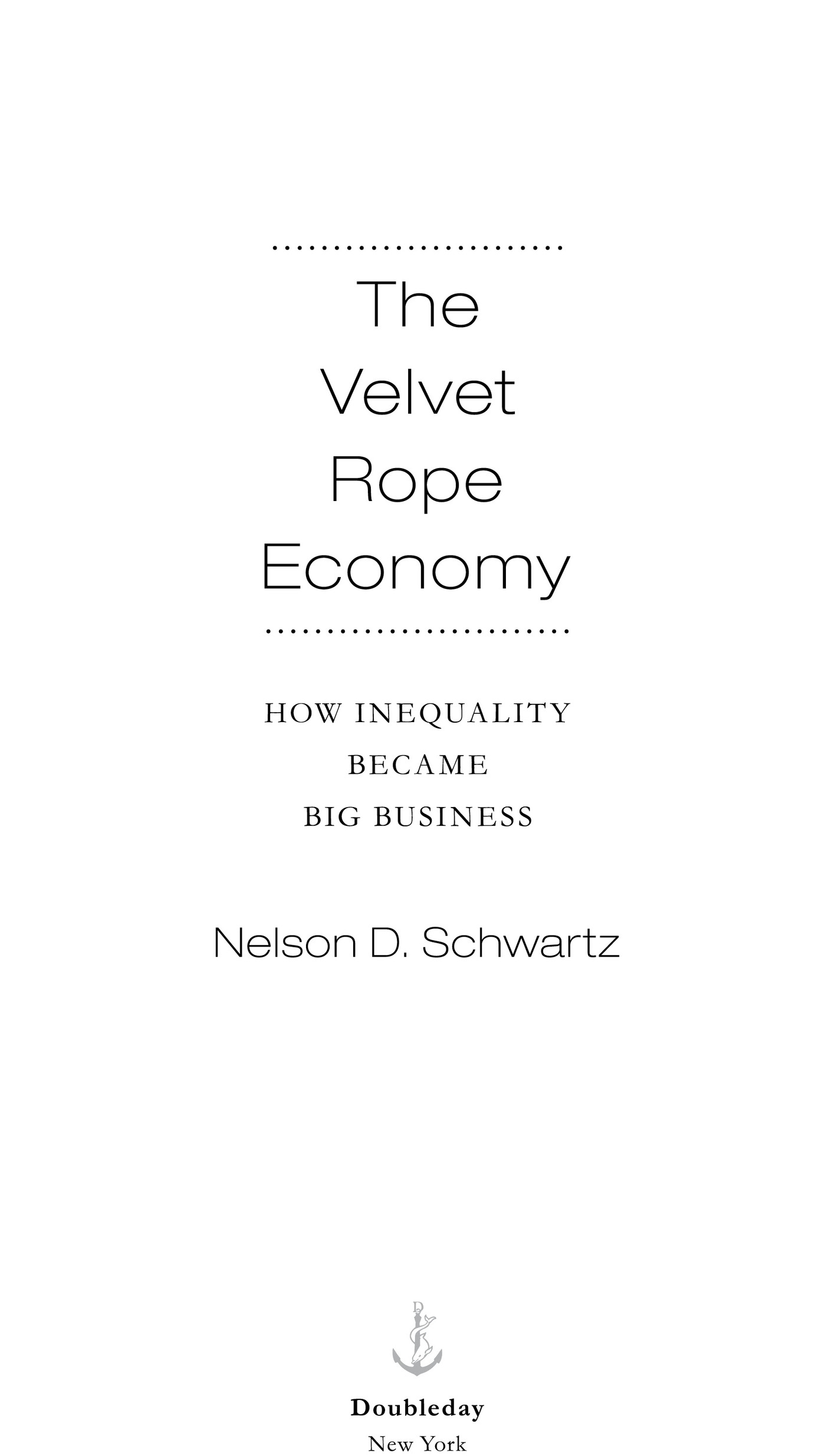Contents
Landmarks
Print Page List
Copyright 2020 by Nelson D. Schwartz
All rights reserved. Published in the United States by Doubleday, a division of Penguin Random House LLC, New York, and distributed in Canada by Penguin Random House Canada Limited, Toronto.
www.doubleday.com
DOUBLEDAY and the portrayal of an anchor with a dolphin are registered trademarks of Penguin Random House LLC.
Cover design and illustration by Michael J. Windsor
Library of Congress Cataloging-in-Publication Data
Names: Schwartz, Nelson, D., author.
Title: The velvet rope economy : how inequality became big business / Nelson D. Schwartz.
Description: First edition. | New York : Doubleday, [2020]
Identifiers: LCCN 2019021223 (print) | LCCN 2019981578 (ebook) | ISBN 9780385543088 | ISBN 9780385543095 (ebook)
Subjects: LCSH: Income distributionUnited States. | Affluent consumersUnited States. | United StatesEconomic conditions21st century. | ClassismUnited States.
Classification: LCC HC110.I5 S315 2020 (print) | LCC HC110.I5 (ebook) | DDC 339.2/20973dc23
LC record available at https://lccn.loc.gov/2019021223
LC ebook record available at https://lccn.loc.gov/2019981578
Ebook ISBN9780385543095
v5.4
ep
TO ANNALISE
Money doesnt talk, it swears.
BOB DYLAN,
ITS ALRIGHT, MA (IM ONLY BLEEDING)
Contents
Introduction
Under the baking hot sun of an Orlando morning in August, the line at SeaWorld snakes its way past the turnstiles and into the distance toward the vast parking lots. Sweat pours down the faces and backs of the dads, while the moms vainly try to calm screaming toddlers and entertain their fidgety older siblings. Gum sticks to the kids sneakers as parents shell out money for one more bottle of water and the loudspeakers announce yet another delay for the Dolphins Up-Close Tour. When visitors finally arrive at the front of the line, groups are quickly hustled past the dolphin pools, only enabling the weary tourists to briefly touch the captive creatures.
Two miles away, the cast of characters is the same but the atmosphere is completely different. Here, at an oasis called Discovery Cove, parents lounge on daybeds and kids play in hammocks amid lush landscaping. Lines are nowhere to be seen, and there are even private cabanas complete with towel service and fridges stocked with snacks and beverages by an artificial beach. When they are ready, families depart for a personalized Dolphin Swim Experience, with an individual trainer as their guide.
At Discovery Cove, parents and children wade into the dolphin pool, where the boldest visitors can take hold of a dolphins dorsal fin and go for a gentle ride. Teenagers can break off from the group as part of the Trainer for a Day package, complete with feedings with dolphins, a behind-the-scenes tour, and the opportunity to shadow employees. Other options include a chance to wade beside otters, hand-feed parrots and toucans, or go snorkeling with tropical fish and rays. Both parks are owned by SeaWorld, so Discovery Coves guests can always hop over to the traditional park for old favorites like the dolphin show. And, for an extra fee, they can skip SeaWorlds lines and reserve the best seats in the house to see the marine mammals.
While thousands of visitors a day throng SeaWorld, daily attendance at Discovery Cove is capped at 1,300. Why? To create an exclusive experience that an affluent family of four is willing to pay up to $1,240 for, more than three times what a visit to SeaWorld would cost. And for SeaWorld, a publicly traded company that has been battered by criticism from animal rights activists, Discovery Cove is a cash cow. So while long waits are a feature of the traditional park, at Discovery Cove there are expanded offerings aimed at a tiny slice of visitors. In 2017, the upscale park began offering its most adventurous guests the chance to swim with sharks for an extra $109 per person, or with stingrays for $59. With no lines throughout the park, you can plan your adventure at your own pace, Discovery Coves website promises.
This patterna Versailles-like world of pampering for a privileged few on one side of the velvet rope, a mad scramble for basic service for everyone elseis being repeated in one sphere of American society after another. At Yankee Stadium, holders of elite Legends tickets enter through a separate door, enjoy a private dining room with gourmet food in addition to the usual franks and popcorn, and are ushered to seats that sell for $1,000 or more, located along the first- and third-base lines. Occupants of the Legends Suite never come into contact with other people attending the game if they dont want to, whether they are far away in the bleachers or sitting in slightly less expensive mid-tier boxes a few yards back. Nor can the other fans sitting further away walk down to the field for autographs or a sight of their favorite player at bat like in the old days. The new Yankee Stadium that opened in 2009 was designed with a moat that prevents anyone except Legends seat holders from getting close to the field near home plate. What was once a quintessentially communal, American experiencegoing to a baseball gamehas become another archetype of what I call the Velvet Rope Economy. And behind the scenes, among the purveyors of elite experiences, the business of building Velvet Ropes has never been better. Its driven by straightforward economicsas more wealth accumulates in fewer hands, attracting this wealthy contingent is essential if profits are to grow.
But this book is about more than business or economics. The rise of the Velvet Rope Economy threatens to worsen the divisiveness that plagues our politics and culture today. After all, if you never actually encounter people from a different class or social background, its much easier to demonize them. With growing inequality , there is an attempt by the affluent to buy their way out of public spaces and services in favor of something better and often more exclusive, said Michael J. Sandel, a professor of political philosophy at Harvard. Sandel examined these issues in his 2012 book, What Money Cant Buy: The Moral Limits of Markets, and the trend has only gathered steam since then. As a result, he said, it becomes harder to think of ourselves as citizens engaged in a common project and in a shared way of life. This has contributed to the growing polarization of American life and the erosion of community.
The political and social repercussions of the spreading Velvet Rope go beyond symbolism and rhetoricthey have a real impact on government policies and fiscal priorities. For instance, when corporate decision makers, members of Congress, and especially the political donor class routinely bypass traffic jams and deteriorating trains and buses and get to the airport via a luxury helicopter service like Blade, the political impetus to improve public transit systems fades. The ease of catching a commercial flight at the deluxe new private terminal at Los Angeles International Airportthe first of its kind in America, with a $4,500 annual membership plus a $3,000 fee per tripmakes it that much easier for those who can afford it to forget about the decrepit main terminal, with its claustrophobic hallways and overcrowded waiting areas. Similarly, if wealthier consumers can jump the line at the hospital and see specialists before everyone else or employ high-priced counselors to gain special access to the Ivy League universities, health care and education reform become much less pressing. The name for the American system of government, a republic, comes from the Latin














